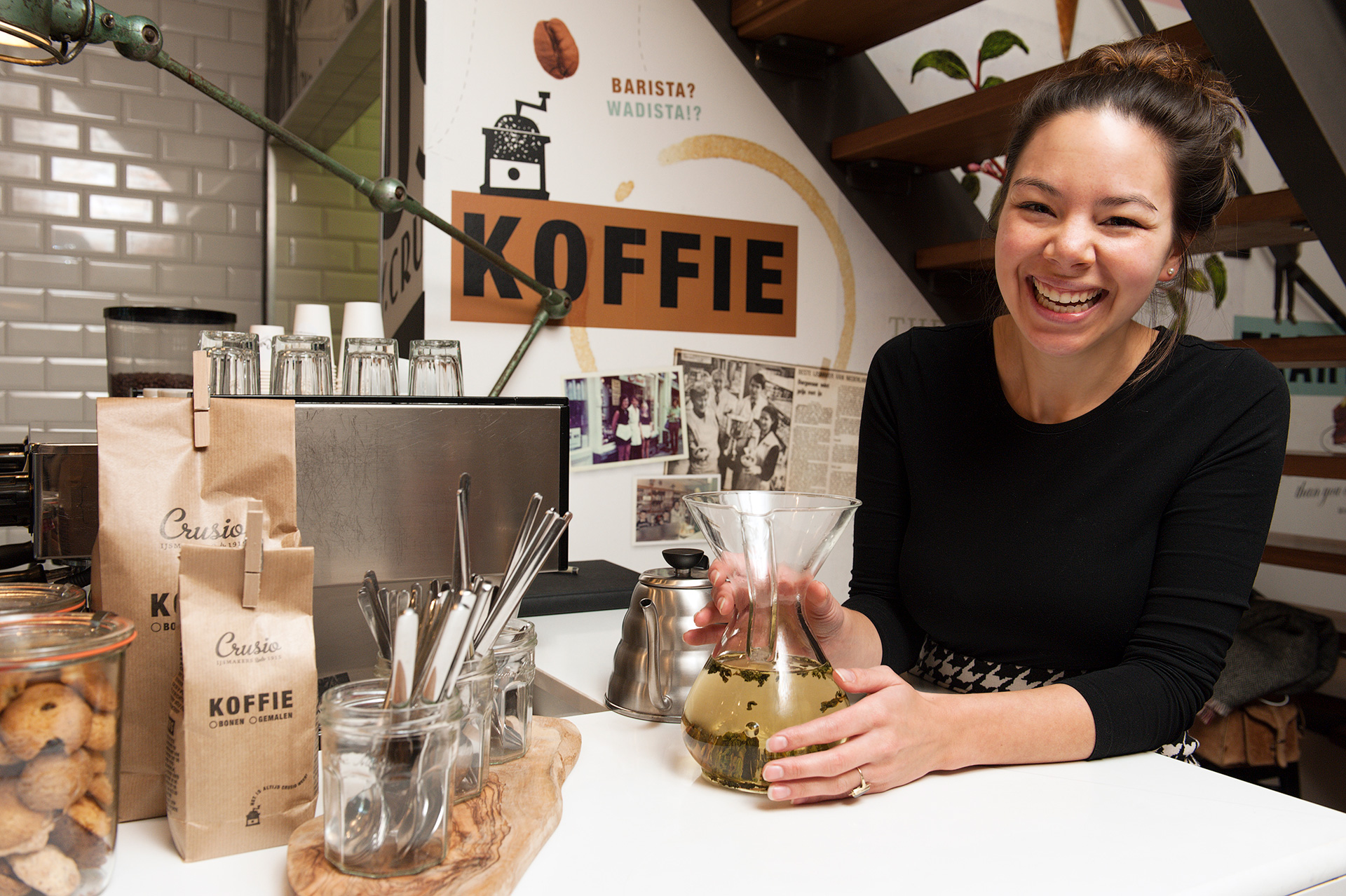
Photo courtesy of Kiona Malkina.
When the Benelux’s food and beverage industry first got acquainted with Kiona Malinka, she was a coffee professional, both self-taught and SCA-certified. However, it was the establishment of Crusio Thee in 2014 that got everyone hooked—on her teas. Five years later, Crusio Thee and its iconic black cans appear in specialty cafes across the Netherlands, Michelin-starred restaurants around Europe, and various venue types in between. Today, Malinka calls herself a Dutch tea importer, supplier, and sommelier. In 2018 she unveiled the Kiona Malinka Tea line, now being served by a coterie of brand ambassadors whom Malinka selected and personally trained.
I had long wanted to interview Malinka, until finally I got the chance. We first talked at Lebkov Rotterdam, a branch of the sandwich shop chain outside the city’s main train station, where I was instructed to let the Crusio Chinese oolong I ordered there steep for two minutes if I wanted flowery notes (any longer and it would go vegetabley, though never become bitter). Later I watched Malinka give demos at the World of Coffee Amsterdam’s Brita stand, to which she drew steady huddles of sippers and spectators.
The 34-year-old conveys an impetuous need for knowledge and easily recalls the details of her origin trips and the personalities she meets along the way. She speaks in a warm alto voice, with nicklessly manicured hands helping communicate what’s on her mind or what’s in her brew. In one light, her bun—by now, her metonym—invokes a prima ballerina. Yet, the more I get to know her, the more it conjures a samurai’s topknot, fixed for a battle-ready helmet. Dauntless as she is darling, Malinka shares in this conversation stories about herself, her teas, and what keeps her athirst.
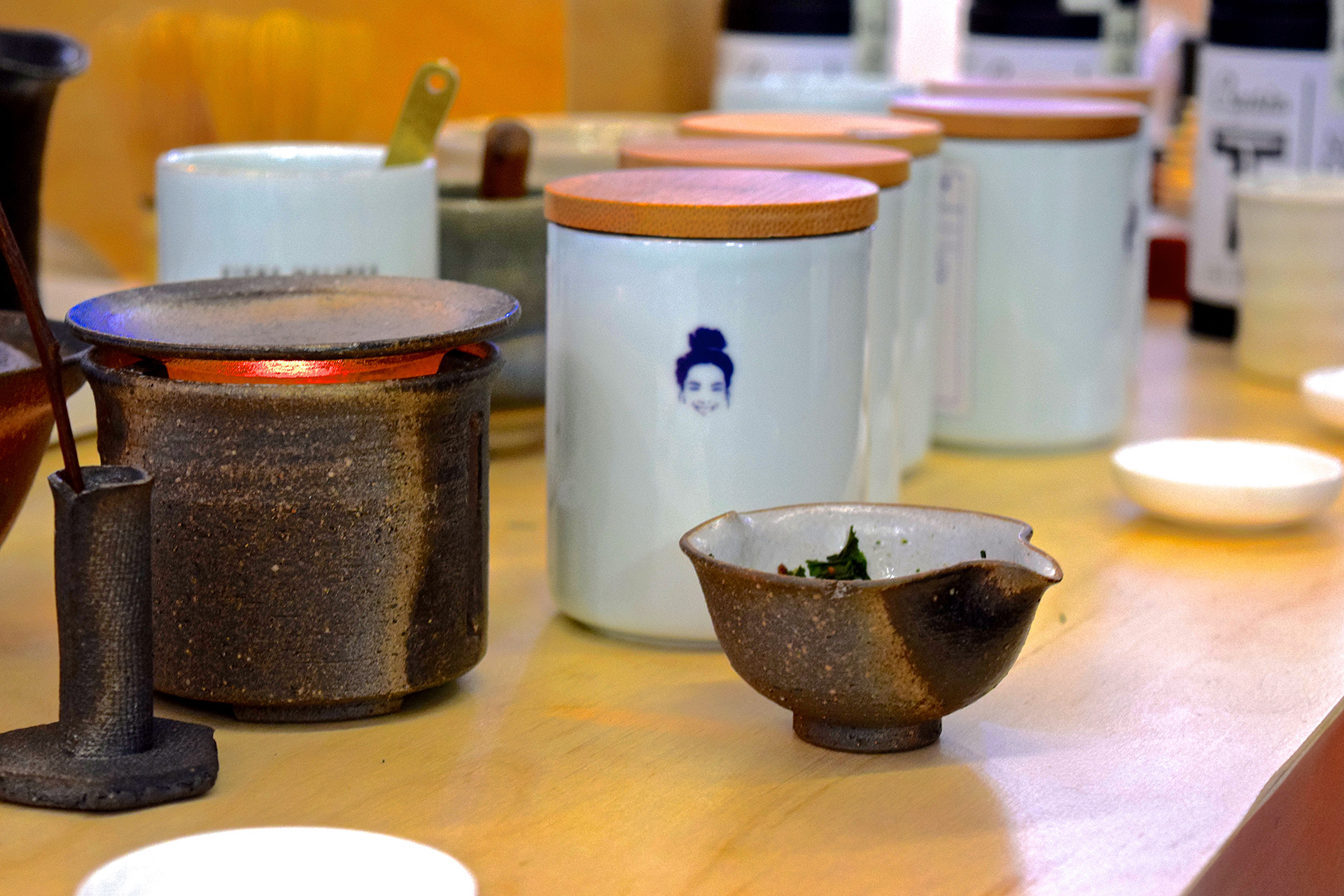
This interview has been condensed and edited for clarity.
Tell us about the early days. How did your career in the Netherlands’ beverage industry begin?
I grew up in Bergen op Zoom, a small city, actually more like a village, and I was determined not to live there because I wanted to live everywhere. My father is from Papua New Guinea, my mom is Dutch—really Dutch—so it’s a nice combination. Traveling was pretty logical because, on one side, we’re not from here and on the other side, we are; traveling was something that we did.
Since I was 10, I was determined to become a hotel manager. I started in the industry by going to hotel school, which was followed by getting a degree in international hotel management, both in Breda. My first training abroad was in Cyprus—where they do ibrik coffee. I was maybe 17 then, and I had it in my head that I had already been studying hotel management for four years and that I should have been a manager already. But I wasn’t; in Cyprus, I was the coffee brewer. The first day I called my mom and said, “I have to brew the coffee everyday for the rest of the traineeship!” And she said, “Ah, suck it up because this is what you have to do.” But that first day I realized how fun it was that everyone who ordered a coffee had their own recipe. Greek coffee is not the most delicate or complex, but it was really interesting how all the people who entered the bar had an opinion—they wanted to boil it once, or stir it twice, or have some sugar in it. So after a week, I was impressed, and I realized that I really liked brewing coffee. Yet, I was studying to become a hotel manager and after completing my education, I got a job as a manager. I was really bad at it because I like to zoom in on one product, to be an expert, not to be an all-rounder responsible for sales and employees. If one person ordered a cappuccino, I was intent on making the best cappuccino I could, but I was the manager, so that was pretty weird. After one year, I quit my job, and I became determined to be a barista. But at that time in Holland that was not a common job.
When was that?
Like 10 years ago. When I told my friends that I quit my job as a manager to become a coffee brewer, they all asked me, “What is your plan?” I thought, “Well, now I have to do it.” So I went to Guatemala to see coffee farms, and I also went to London to do some coffee internships because I thought, “if I only follow what certain books say or just one person, I will never form my own opinion.” I collected all these books and read them. Yet, I was so insecure that I felt I had to do this really big investigation into coffee before I could put “barista” on my nametag. I was pretty thorough, so that’s the good part; the bad part is that it took me half a year to have the courage to say that I’m a barista. But some time after that, I took over a company, Crusio.
Besides being the name of your tea company, Crusio is also the name of the ice cream salon you run with Coen Crusio. What’s the connection?
Coen is my partner in business and life. We are now both owners of three companies: Ijssalon Crusio, Crusio Thee, and a new line called Kiona Malinka Tea. First we took over Coen’s family-owned ice cream shop. When we did, I was determined to improve coffee and tea specifically in that shop because in the wintertime business was really slow. The shop is over 100 years old, founded in 1915; it’s pretty romantic. Coen is the fourth-generation owner, and even though nowadays he spends less time making ice cream, he still creates the recipes and spends a few hours in the kitchen weekly.
So when we took Crusio over, I would stand there in my own coffee corner, with everyone ordering coffee. I was so enthusiastic. We had 500 kinds of beans a year, switching beans every day. It was fun, but there were two problems. The first thing was that I was expecting people to ask me all these different questions and, in so doing, to give me feedback that would help me develop my skills in coffee and tea. But that wasn’t the case at all because everyone loved everything. They were satisfied, so they didn’t ask questions. The second problem was that sometimes they ordered tea. And I knew everything about coffee—I was able to tell stories about coffee, how to brew it—but tea I didn’t know anything about. If someone ordered tea, I served them the water with leaves, and they had to brew it themself.

But you did serve loose leaves?
Of course, but I didn’t have knowledge about which type of tea was from which country. So I Googled the brands we carried, contacted them, and told them that I have a small ice cream shop and want to know more about who picked the leaves, in what season, from which mountain, what the tea’s flavor profile is, and what recipe they recommended.
Would you say your coffee knowledge was guiding you to think that way?
Yeah and also my wine knowledge because, in my studies, I first got a basic chef’s education, then wine, then coffee. I thought it was really logical to know the basics about a product because, if it’s an ingredient, you have to know what it’s about and where it’s from. At that time, there was still a lot of “magic” surrounding tea, leading to responses like “it’s from Asia”—Asia is really big [laughs]; that’s not an answer. Or the response “it’s a special blend”—well, I don’t like blends that much because you cannot taste what you like about the tea and you cannot form an opinion on it. And I thought, “why should the guests brew their own tea because in coffee that would be really bad.” Imagine saying, “Brew your own Chemex—it’s over there. Uh, the grinder is over there. You can tweak it however you like.” That would be horrible. For tea, most of the time you have to brew it yourself—and everyone can be a tea brewer—but I just had to imagine someone on a first date being like [makes awkward teabag-handling gestures].
I realized it was the start of new adventure when all the brands I called didn’t have any answers. So I started an investigation again, but this one took a little longer than my investigation into coffee because I took a plane to China. I didn’t do research for the trip in advance because everything on Google has already been discovered. If you take one particular person’s advice, the danger is that you will adapt their thinking. It was quite complicated for me, especially in the beginning when I was more vulnerable; if I met someone who knew a lot, I might have believed everything that person said. That’s why then, and to this day, I would rather do research myself, just go to the source—this is my style.
So in China, I found myself going up a hill in a jeep. It was just the logical thing to do: I had to visit a farmer and see what would happen. So I knocked on his door, he opened it, and I told him, “I’m Kiona from Holland, and I want to drink tea with you.” He said, “You may enter.” My Chinese is not good, so I had this student with me, interpreting everything. Then the farmer gave me this small cup and with the first sip I thought, “am I so lucky that I just go up a hill in China and I find this amazing complexity, or is something here different than in Europe?” The latter was the case—it was the freshness; the tea was picked the day before and dried, and then you could drink it. With big brands, sometimes the tea sits around for two years, so they have to flavor it, but then it gets stored and becomes really flat. But that day with the Chinese farmer, I got all these flowery scents. I was really, really confused after just one sip. So I called Coen, my partner, and said, “I’m sorry, but this is the beginning of one big question and I have to get answers. My spot behind the espresso machine, we have to make sure that we find someone to fill it.” We found a replacement for me at the ice cream shop and then my traveling started. I visited 14 countries and found over 150 tea farmers. I buy from 65 of them now. Every trip goes the same. We don’t Google. I just book a plane, a driver—in some places it’s really hard to drive, like in Taiwan, or it’s really dangerous, so to make sure that my mom feels OK, I hire a driver [chuckles]—and an interpreter. It’s not an official one because official interpreters all bring me to places they think I want to visit: big tea farms, factories, or corporations. We don’t work with corporations; we just work with farmers.
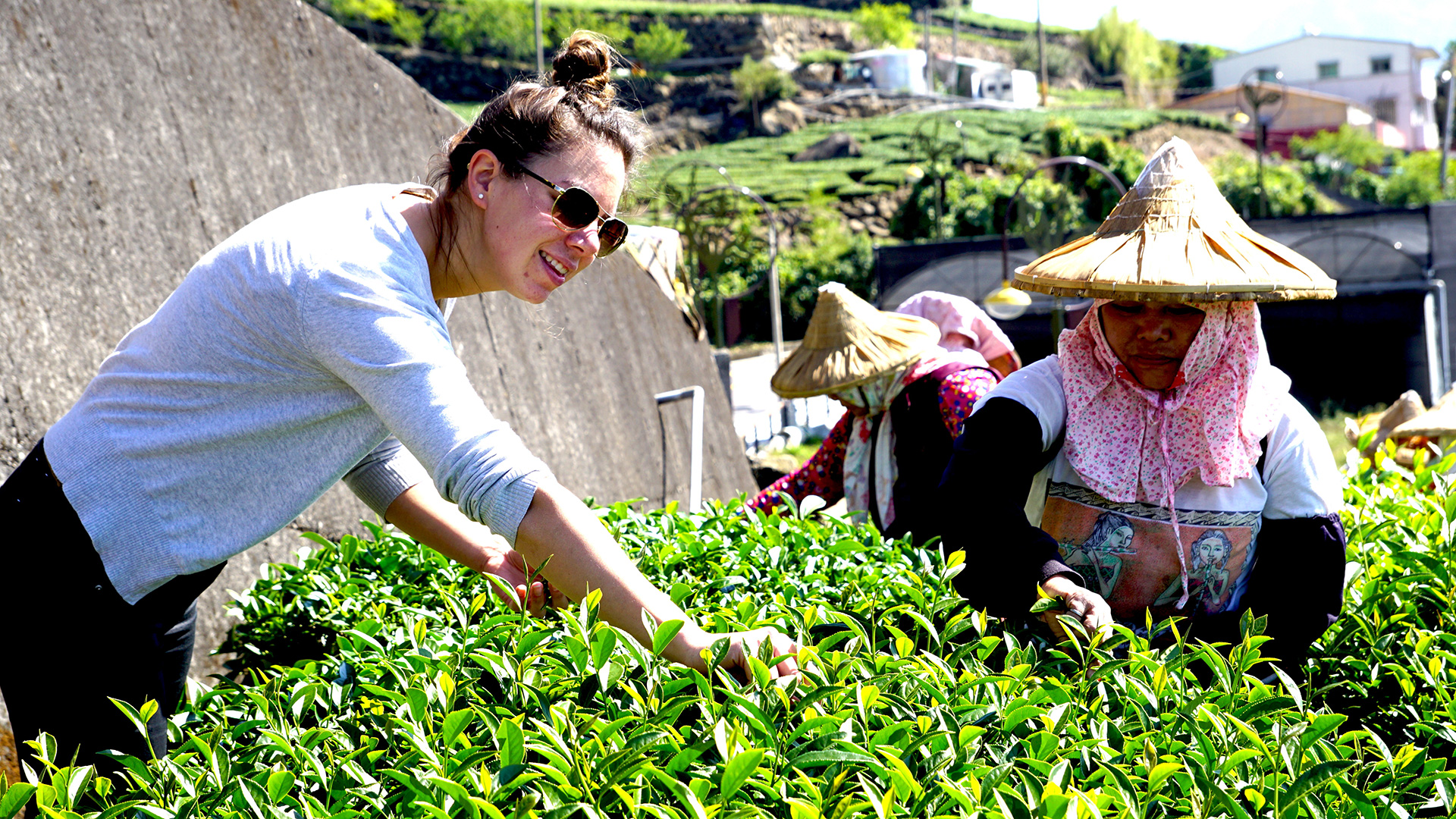
Photo courtesy of Kiona Malkina.
If you’re not Googling, are you relying on word-of-mouth recommendations?
No, I just look at where tea is from. In a tea country, you have mountains where the tea grows. I just go there, and I knock on a door. There’s always someone who knows someone who knows a farmer. And if I enter a country and see a perfect tea field, but it’s black tea and I’m looking for oolong, I’ll ask that farmer if he knows where I can find oolong. It’s creating a network from inside out. But you have to be patient, and I’m not patient at all because I’m in a hurry to learn and to develop. But once I’m there, I sit back and see what happens. I sleep in the shed—it’s really not luxury—and my alarm goes off at 4 o’clock if the farmer is waking up then as well.
On my first few trips, I would sometimes stay a month at one location because I couldn’t understand the essence of what they were doing. I couldn’t sell their story or tell their story if I was not getting the point. So I did a lot of tea-picking and working in the factory, but also a lot of eating with them and talking with them. Funny things would come up. Like once, when I had been staying with a Taiwanese farmer for a month, it was the last Friday of my trip. I was done with traveling, tired from being surrounded by people I could not understand and papers I could not read. On the last Friday, I drove up the mountain to go home, but on my way, saw this farm with perfect tea leaves. So we stopped the car, I knocked on the door, and spoke to the farmer. He said that I may enter, but we could not taste tea because it was Friday afternoon and that meant it was karaoke afternoon. I said, “OK,” and he said, “Yeah, you can join?” I sang for two hours in Taiwanese. I cannot speak Taiwanese. He was so happy, and we buy his tea now.
Which tea is that?
It’s No. 092. That’s a Taiwanese oolong, but it’s the “karaoke tea” now. Tea deserves someone to tell its story. The stories are already there—tea is picked by the hands of people. That’s not some marketing narrative; they just do it and then after that, they fire it, steam it, pile it into all these stacks, and at the end you have this product. But we need to know what to do with it. It’s still an ingredient we lack knowledge about; it’s just something that we put in water and we drink, and that’s it. But if I tell you what this farmer really likes to eat or how he dances or whatever, there’s a whole person involved.
I’ve found all these farms and farmers, and yet I still feel insecure because I think tea is pretty complex, more so than coffee. If I ever hear a grinder and I see a bean, I’m pretty confident that I can brew the coffee in a way that would make both the coffee farmer and me proud, and the guest satisfied. But with tea, every time you make it, it’s hard. So after all this traveling, I wanted to buy teas for my own shop.
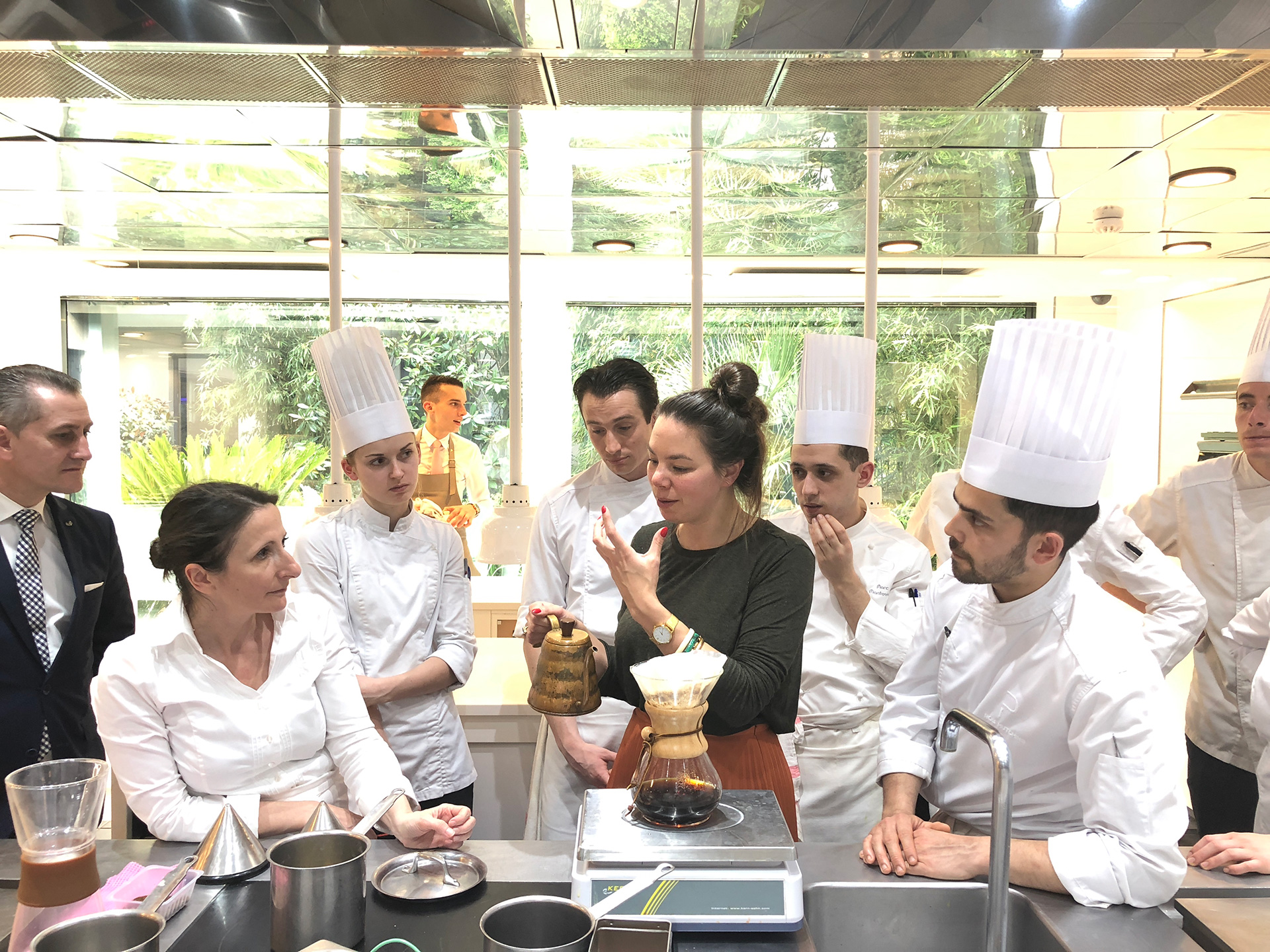
Photo courtesy of Kiona Malkina.
You mean for the ice cream salon?
Yes, though Crusio was so small at the time. I knew a few chefs through my interest in coffee and involvement in the hospitality industry, and I had told some that I went to Taiwan, that I had this flowery oolong, and that maybe it would be really cool for their restaurants. So I went to their places, took some Taiwanese oolong along, and we sat there for hours, eating and drinking. Then other chefs started calling me, asking things like, “Can you find me something smoky?” Or “Can you find me traditional black tea?” I said, “Yeah, I know all these farmers.” This is how the tea brand started. That was five years ago. I wasn’t confident enough to put my own name on it, so I used the name of our existing company.
Crusio Thee is unblended, unflavored, and directly from the farmer. For us, that’s the logical thing to do. We just create the recipe and give tasting notes, as well as specify where it’s from and what the growth height is, similar to details given for coffee. We tell each farmer’s story—I blog everything. We don’t do acquisitions. If customers want tea, they call us. When we started, I would bring the tea and train every customer myself. I did that for three years. Now we sell in nine countries. We have around 30 staff. In the Netherlands, we hire people who make sure the tea quality is OK, and we test everything.
Do you still travel every year?
Yeah. In the beginning, I was gone for, like, two or three months and then I was home again. But that is not necessary anymore. A month ago, I went to South Africa to find a good red bush [also known as rooibos] because red bush was something that I didn’t love that much. The whole red bush market is all small bags and so really cheap. I found this organic farmer after having searched for four days, and I asked him if I could taste his tea. He began crying and said, “Nobody ever asked me if they could taste it before buying it. They all buy before the harvest—everything is finished off and everything is really cheap.” I said, “I don’t want a cheap tea. I want a good tea, so can we talk about what is good for you and together determine how to ferment and brew according to your philosophy?” He kept crying. He was 73. Nobody ever asked him that, and I thought, “how can you buy something that you haven’t seen or tasted?” That’s a different way of working.
The tea business is quite commercial and quite brand-orientated; of course we have a brand and we are a commercial business, but I don’t want to tell my story. I want to tell their story because it’s more interesting, for sure. So this is the philosophy of Crusio Thee. You often hear that tea is labor-intensive, it’s complex, it’s beautiful. If you know what you’re doing it will turn into a pretty beautiful cup of tea. We have the final step in our hands, and we only need a bit of knowledge because it’s not rocket science to brew tea. I can teach it to everyone.
Nowadays, I travel a week at a time and then I’m back home again. That’s also because I know these farmers already, so most of the time I’m on calls with them or we send postcards. If it’s my birthday, I receive all these Hello Kitty gifts—we are friends. I’ve stayed on their farms for a long time, and they feel that I’m determined to really know their story, that I’m really sincere to see what they are doing. Most buyers are really in a hurry because they have to cover all of China in two weeks. I stay on one mountain for one month, so by the end I know the whole village; the other buyers think I’m strange, but that’s OK.
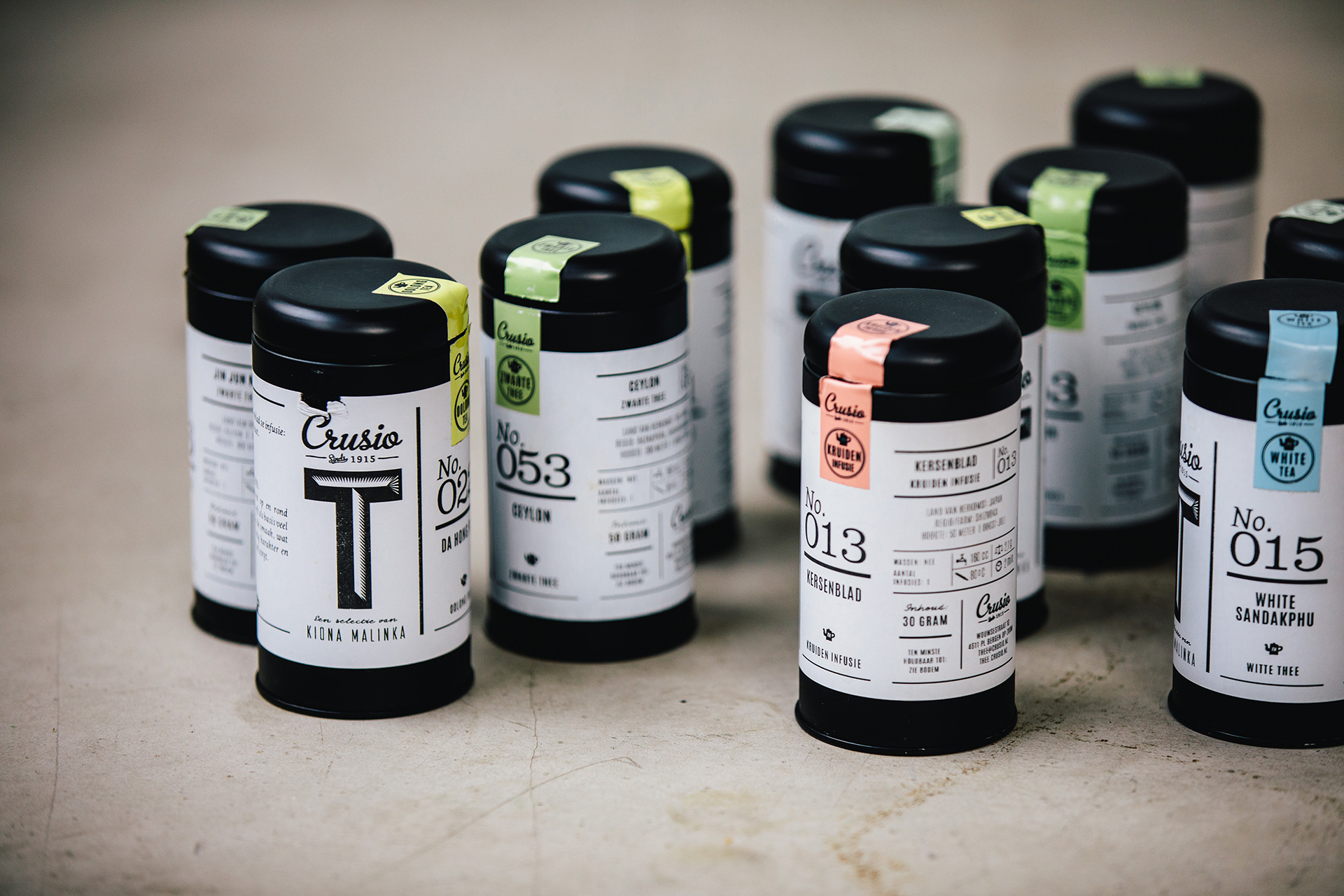
Photo courtesy of Kiona Malkina.
How many teas are in the Crusio Thee collection?
It depends on the season, sometimes 50, 60, or 20. Sometimes we also do herbs, for example, we might have red bush in different styles, but then the next season, we find something different, be it an herb or a tea. Then we have teas that we can buy year-round. For example, in Sri Lanka, they pick every two weeks throughout the whole year, so we can buy tea from there all year.
Would it always be the same farm in Sri Lanka supplying you?
Yeah, so long as they meet our flavor expectations. And most of the time they do since we have already selected and screened them. Because I visit the farms, they know what I like. This is the goal; if I visit them, I get knowledge, but they also have to get knowledge about me. So the farmer from, for example, Sri Lanka, he will call me and say, “The weather is good today. It’s sunny, the humidity is good. I think I’m gonna pick today for you, OK? How many kilos do you need?” I communicate what I need, what I like, and then he sends me, by plane, a sample between 20 and 50 grams. I taste it—this is one of the 200 samples that I taste every week—and then I call him back and I say if this is it or this is not it. I never ask for a discount because it’s small farms; he tells me his price, and I will decide if I can sell it for that price at that quality. If so, he sends it by air, like all our tea; by sea it would be on a ship for three months and the next season would already be upon us, so this is the reason we fly everything in. Then within two or three weeks, it’s in our storage, we put it in a can, and then we sell it.
If people want to buy, like, 50 kilos at once, I advise them not to; it is better for them to order five kilos ten times a year. We have different harvests every season, so you can always get deliveries of tea from a new crop. Our philosophy is to deliver fresh, like a grocer. It’s different than ordering in coffee because you’re not dealing with green beans, but rather with tea that’s already dried. Ordering tea in bulk is the equivalent of buying roasted coffee to last for the entirety of a year, and that wouldn’t be smart.
Tell us more about those 200 samples you taste weekly.
I taste them over three mornings before breakfast. I think I spend 10 hours a week tasting. Tasting tea is a creative job and although I’m really practical, I acknowledge that the vibe should be right. For a while, each time the company would grow, I would lose my tasting space because it had to be used for storage or something else. At one point, I was do tastings at home, taking samples from my van. But to taste, everything should be perfectly in place. So now I’ve built this wall in the back of the ice cream shop, to create a speakeasy-like section. It’s this perfect tasting place. A few chefs have come by because it’s the perfect escape; you can taste for hours and afterwards you can get as much ice cream as you like. It’s really cool because I started my career in the ice cream shop and I’m still there. I’m still really involved, not in practical aspects of the ice cream business anymore, but I still love the place.
I first started spotting your teas at Amsterdam specialty cafes and later at Michelin-starred restaurants, such as FG in Rotterdam. How did you get picked up by them?
Of my first 50 customers, I think 20 were Michelin-starred restaurants. I didn’t expect that because most Michelin restaurants are sponsored or you have to persuade them with all kinds of things, but they just called me. The thing is: these chefs really think ingredients through. They want to know everything. If I tell them that this is a flowery cup and it isn’t, I’m gone, out the door. But because of all this investigation I had done, I knew my stuff. If people asked me something, I could answer because I was there, on the tea farms, for all these months.
So I had all this knowledge, I think that was the first step, and then someone saw my tea somewhere and they wanted it. Sergio Herman uses it at The Jane Antwerp. Anne-Sophie Pic, at her three-star restaurant in France, is a customer now too. In Gent, we also work with Chambre Séparée, and in Amsterdam, with Taiko restaurant at the Conservatorium Hotel and OCCO, the bar brasserie at The Dylan. Sometimes the chefs invite me to visit. I can be working with the chef for two days, and the whole time I’m in this state of why?-what?-how? because I’m still not satisfied with what we know about tea. I have this need to do it in the perfect way, but this is still something we have not managed, so it’s fun. It’s really not boring.
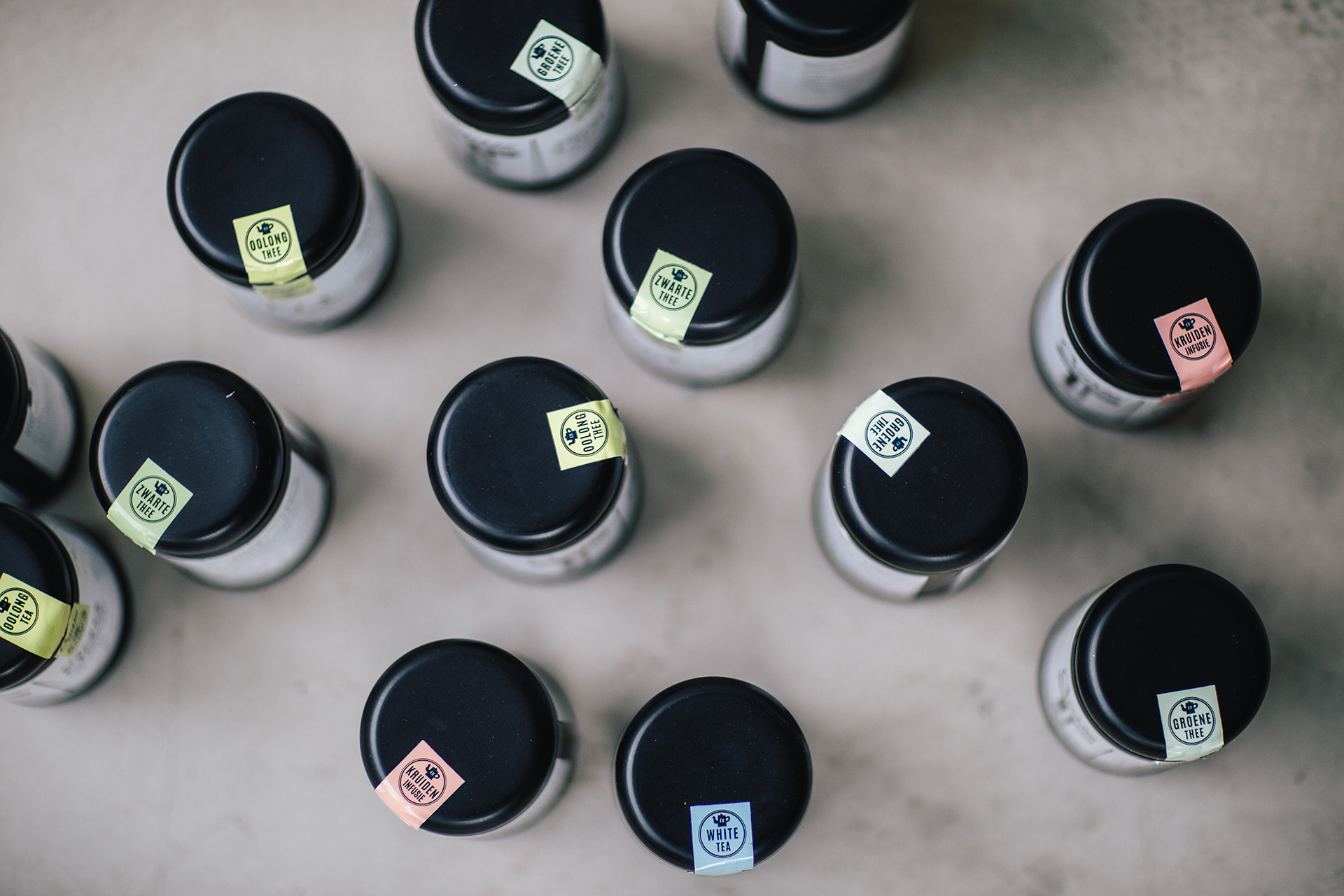
Photo courtesy of Kiona Malkina.
Tell us about your iconic black cans.
It was really important that it be small packaging. Most people who see it think it’s a consumer-size package since most cafes standardly have those tins that can fit a kilo of tea. In the Netherlands, approximately five coffees are ordered for every tea. It’s really normal to open a one-kilo bag of coffee and just put it in the grinder and then open the next bag when you need it. Our tea cans will fit approximately 25 teas per can, so if you have five cans you have over a hundred teas before you need a new one. Then we have the 200-grams bags that you can use to refill your cans four times.
The image of tea is not really cool or sexy, so I thought our can should be something that everyone should feel OK holding, whether it’s a guy or someone working in a coffee shop or my mom. It should be a nice clean style that makes it about the tea, about the farmers, not the brand. Often the tea names are really complicated for non-Chinese readers, which is why we have assigned them numbers.
What is the most surprising spot your tea has shown up?
A comedian named Jochem Myjer. If you’ve seen him, you know he’s pretty intense, and he never drinks coffee because otherwise he would explode—I don’t think society is ready for him to drink coffee. We got together once and he really loved the tea. Now he’s a private customer.
That reminds me: I’ve been hearing more people say they are cutting out coffee and switching to tea to tame their anxiety levels. As you see it, is that a legitimate approach to lowering caffeine intake?
Tea and coffee, they both have caffeine. The one in tea you call theine, but it’s the same. The only thing is that the molecular structure of tea is different than coffee, so if you drink a coffee you get a rush—a kind of punch in the face—and after a while you need another one and this is how you stumble throughout the day, right? It’s like, “Coffee, I need a coffee, I need a coffee.” I drink coffee a lot myself. But after one tea, for six hours you’re getting a bit of caffeine steadily, and there are ingredients in it that relax you. Every sip keeps you in balance, so it gets you focused but not over-caffeinated. Sometimes with coffee, the world moves faster and slower at the same time; with tea you never experience that.
So what in the world is next for you?
I’ve learned all these things about pairing food and tea, varietals, temperatures, and recipes. If I make a recipe, my customers follow it and that’s it. The next step is teaching them to know what happens when you drop the temperature 20 degrees, to teach them in a different way. This is why I started an invitation-only brand. It is called Kiona Malinka Tea—using my name is still something I have to get used to. There are 30 teas in the current collection, and I invited only 15 customers to use it. Each one of the 15 was happy to do it. The customers are all around the world, and it is not only Michelin-starred restaurants, but also cool coffee shops and people who really have the potential to take the next step.
I really want to show everyone what we can do. I want to blow them away, which is not possible to do with hundreds of customers. So within a year, I want to make sure that everyone who’s working with that brand can make recipes on their own, no longer just following my steps because that’s what they had been doing. In preparation, I held four-hour tastings with the group’s members. We sat back and we tasted together, and we talked about flavor and possibilities. We needed time to develop this. I could not send the group an email with the new pairings. They had to sit. We had to get to know each other on a different level, and then we created. It was really a luxury that I could do this.
And can people already drink the Kiona Malinka brand at those select places?
Yes, as of summer 2018. Kiona Malinka Tea is only sold to those 15 customers, who serve it themselves but do not resell it. Some of those venues are The Jane Antwerp, Pure C, and Zarzo.
Crusio Thee, meanwhile, remains available to all customers, and can be purchased through our webshop and various retailers, such as Lebkov, Caffènation, and Coffeelab.
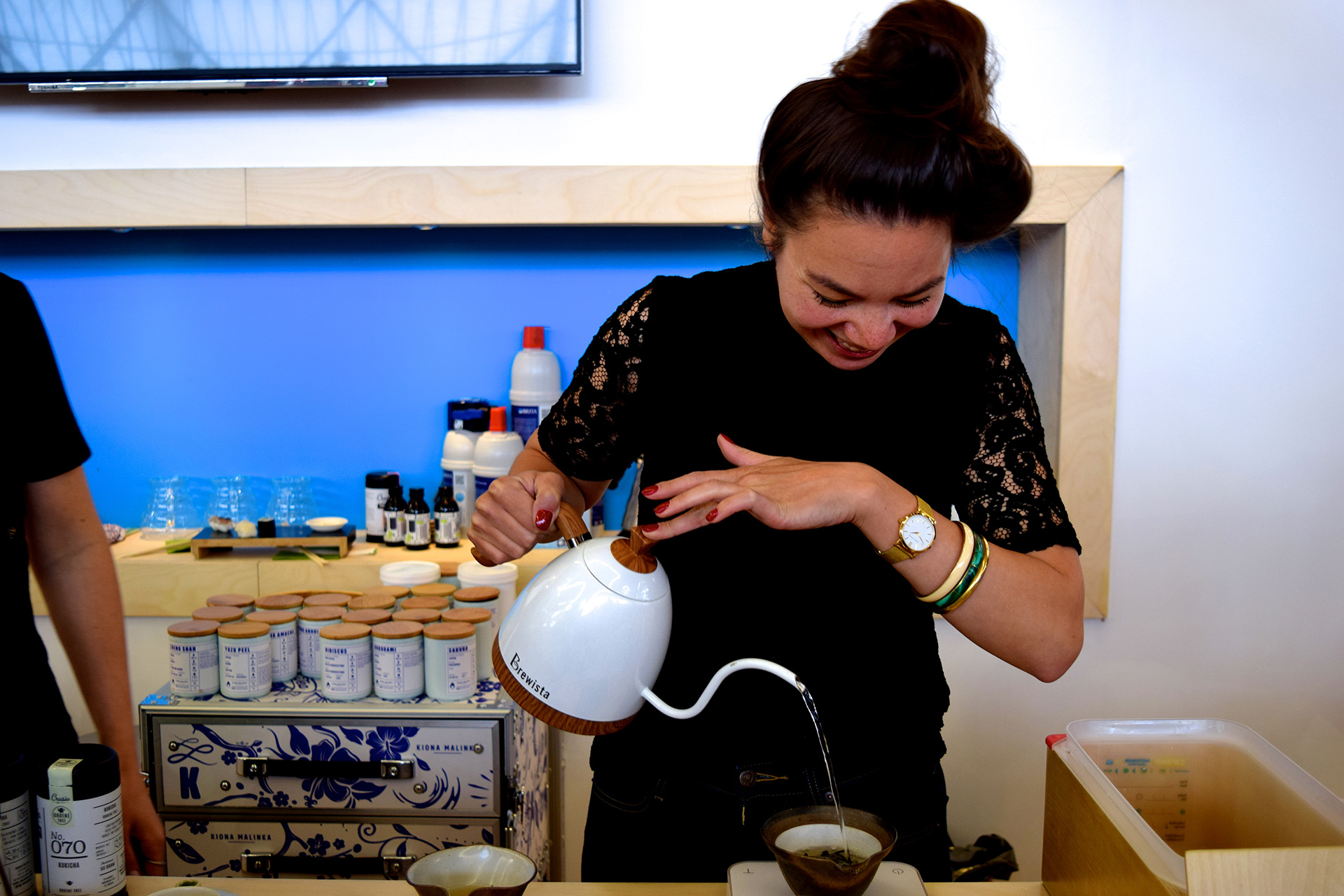
Is there anything you’d like to share that we haven’t yet covered?
Because I was a barista and came to find out all these things about tea, I was expecting my first customers to all be baristas because they think the same way as I do. Some coffee shops are doing a pretty good job with tea, but most of the time they’re only considering the coffee. The main focus in a coffee shop should not be on tea, but there should be good tea options, at least one. I think that in the future there will be a movement in which more coffee people also become really interested in tea. But I don’t know if it’s gonna happen soon. I think it’s interesting that restaurants are moving in that direction and the customers are moving, but in the coffee scene there is some space to grow.
Conversely, why do you think some high-level establishments are less likely to serve really good coffee than tea?
I don’t know since tea is, just like coffee, an ingredient. You can also use it pretty easily to steam a fish, to make a sauce. But increasing coffee appreciation is also part of the effort that I’m putting into my work because my chef customers and I talk a lot about coffee, too.
In the meantime, is the general public going to start drinking better tea soon?
I hope so. It’s not the same as coffee, so we need some time. But I have time. I have a lot of time.
Visit Crusio Thee’s official website and follow on Facebook and Instagram. Visit Kiona Malinka Tea’s official website and follow on Instagram.
Karina Hof is a Sprudge staff writer based in Amsterdam. Read more Karina Hof on Sprudge.
All photos by author unless otherwise noted.
The post Kiona Malinka Of Kiona Malinka Tea: The Sprudge Interview appeared first on Sprudge.

